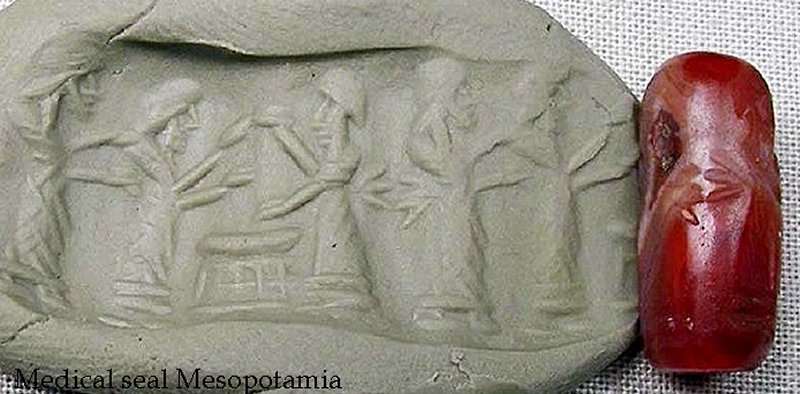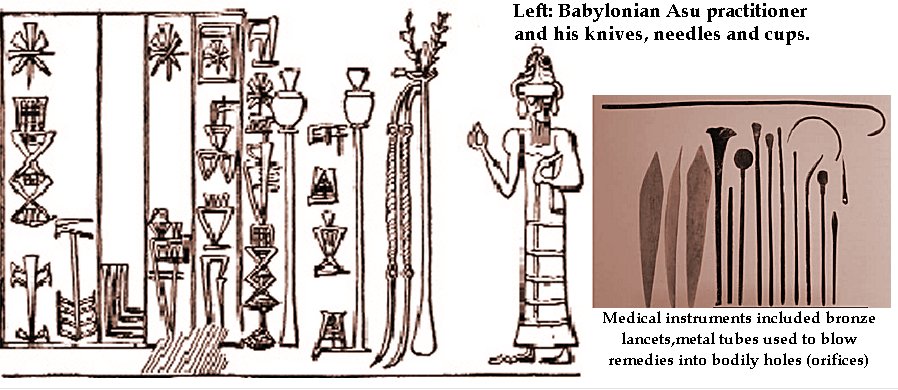Long History Records Of Medicine In Mesopotamia And Sumer
A. Sutherland - AncientPages.com - Medicine has a long history in the Middle and Near East. The earliest known medical records go back to the ancient Mesopotamia and begin in Sumer about 3,000 BC.
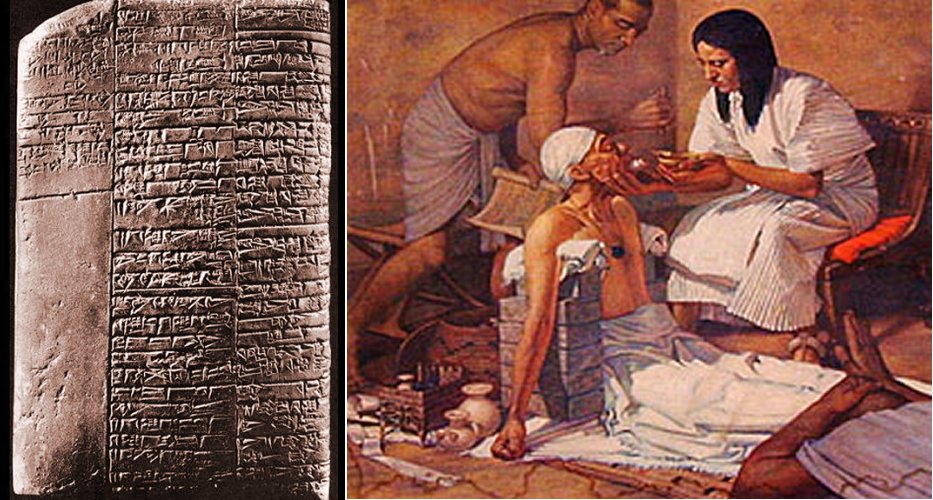
Left: Sumerian medical clay tablet - Medical clay tablet from Nippur dated to about 2200 BC is considered the oldest known Sumerian medical book. 2200 BC. Source: Samuel N. Kramer, History begins at Sumer; Right: Treatment of a patient.
Among the more than 30,000 surviving cuneiform tablets, approximately a thousand of them deal with medicine and medical practices of the Sumerians.
Many of the tablets comes from the ancient city of Uruk (2,500 BC) but most of this knowledge recorded on more than 600 tablets, comes from the famous library of Ashurbanipal at Nineveh (668 BC), Assyria.
The “Treatise of Medical Diagnosis and Prognoses” is one of the largest and the oldest (around 1,600 BC) sources recorded on 40 tablets collected and studied by the French scholar R. Labat.
It contains a mixture of several centuries of Mesopotamian medical knowledge of pediatrics, gynecology and convulsive disorders, neurology, skin diseases, fevers and many more, with descriptions of accurately observed symptoms. Some of the treatments (such as certain bleedings) can be easily compared to those applied even today.
The Greek historian Herodotus in the fifth century BC claimed that the Babylonians had no physicians and this claim is definitely incorrect.
See also:
Hammurabi: Great King Of Babylon And His Code Of Justice
Shamash: Mesopotamian God Of Sun, Truth, Justice And Healing
Assyrian King Ashurbanipal’s Great Library With Thousands Of Cuneiform Tablets
Nippur – Holy City Of God Enlil And One Of The Oldest Cities Of Sumer
The existence of a profession of medicine is well attested throughout Mesopotamian history including the famous ‘Laws of Hammurabi of Babylon’ regulating the practice of medicine, fixing medical fees, and the penalties for failure, which were severe.
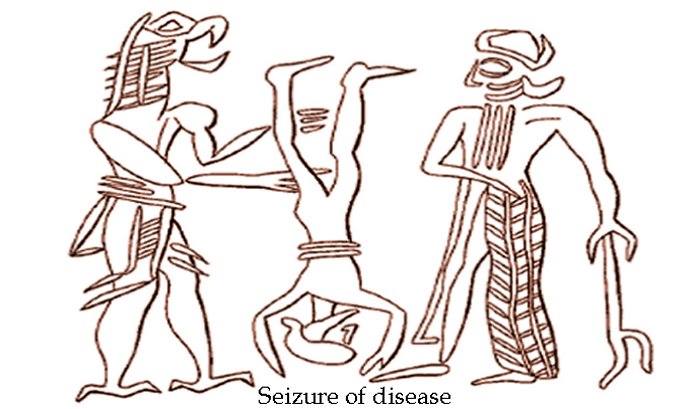
God of underworld, Nergal instructs a lion-demon in the punishment of a sinner; it’s a graphic interpretation of seizure of disease from a cylinder seal of the Old Babylonian Period.
'.. A doctor was to be held responsible for surgical errors and failures. Since the laws only mention liability in connection with “the use of a knife,” it can be assumed that doctors in Hammurabi’s kingdom were not liable for any non-surgical mistakes or failed attempts to cure an ailment. […] both the successful surgeon's compensation and the failed surgeon’s liability were determined by the status of his patient.
‘… if a surgeon operated and saved the life of a person of high status, the patient was to pay ten shekels of silver. If the surgeon saved the life of a slave, he only received two shekels. However, if a person of high status died as a result of surgery, the surgeon risked having his hand cut off. While if a slave died from receiving surgical treatment, the surgeon only had to pay to replace the slave..."
There were two kinds of doctors: the Asu - herbal practitioner skilled in using minerals and a variety of resins, spices and plants with antibiotic and/or antiseptic properties.
The medical library of Ashurbanipal, for example, had lists of more than 250 vegetable substances and over 120 minerals substances with ascribed medical properties and how they have been used to treat certain illnesses.
Asu treated wounds by washing, bandaging and creating the first plaster derived from a mixture of medical and herbal ingredients, which were very important for medical treatment.
Another doctor was the Asipu (Ashipu) - a healer who had to determine which god or demon was causing the patience’s illness and whether the illness was the result of some error or sin of the patient. Diverse spells and charms were usually prescribed by the Asipu.
There were also specialized surgeons with medical background and veterinarians (who also could be either Asu or Asipu). Dentistry was practiced by both kinds of doctors and both may have also assisted at births.
The doctors used a physical examination of the patient and checked temperature, pulse and reflexes. All medicines in Mesopotamia were made by women.
A practical knowledge of many herbal remedies, as well as some surgical knowledge existed in ancient Mesopotamia; the causes of diseases were not entirely understood.
The Sumerians believed that not only the people but also the gods could be ill and the Sumerian writings mention the case of the chief physician, god Enki and his disease treated by the goddess Ninhursag.
Among ordinary people, many diseases were often ascribed to the work of gods, demons and had names such as 'the hand of a ghost’, ‘the hand of god’, 'the hand of Istar’ (Inana)', 'the hand of Samas (Utu)' or ‘the hand of the demon Lamashtu is upon her’. Lamashtu, was an awful she-demon of disease and death and the daughter of the supreme god Anu,
Certain demons and evil spirits acted as the representatives of gods, for the punishment of sin.
Especially illnesses, which could today be regarded as ‘psychological’ were considered as the world of demons or result of sorcery.
Later, the Babylonians made several advances in medicine. They recorded medical history of the patients in order to diagnose to be able to diagnose and treat illnesses. Diverse pills, creams and herbal mixtures based on syrup and honey, were widely used.
Clay tablets covered with cuneiform signs and seals that were used by doctors of ancient Mesopotamia give us important clues to early knowledge of medicine in this region of the world.
Much of this information is still valid and used even today in some of modern medical prescriptions.
Written by – A. Sutherland AncientPages.com Staff Writer
Copyright © AncientPages.com All rights reserved. This material may not be published, broadcast, rewritten or redistributed in whole or part without the express written permission of AncientPages.com
Expand for referencesReferences:
U.S. National Library of Medicine
Gabriel R. A. Man and Wound in the Ancient World
Tiner J. H. Exploring the History of Medicine
More From Ancient Pages
-
 Were Owl-Shaped Plaques Children’s Toys In Copper Age?
Archaeology | Dec 1, 2022
Were Owl-Shaped Plaques Children’s Toys In Copper Age?
Archaeology | Dec 1, 2022 -
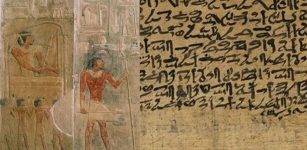 Secrets Of Maxims Of Ptahhotep – Ancient Egyptian Wisdom Is Still Relevant Today
Artifacts | Mar 10, 2018
Secrets Of Maxims Of Ptahhotep – Ancient Egyptian Wisdom Is Still Relevant Today
Artifacts | Mar 10, 2018 -
 Templo Mayor – Sacred Aztec Complex Dedicated To Gods Tlaloc And Huitzilopochtli Who Were Usually Appeased With Human Sacrifices
Featured Stories | Jan 23, 2018
Templo Mayor – Sacred Aztec Complex Dedicated To Gods Tlaloc And Huitzilopochtli Who Were Usually Appeased With Human Sacrifices
Featured Stories | Jan 23, 2018 -
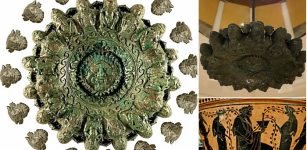 Etruscan Beautiful Bronze Lamp of Cortona – Studied
Artifacts | Apr 10, 2024
Etruscan Beautiful Bronze Lamp of Cortona – Studied
Artifacts | Apr 10, 2024 -
 On This Day In History: Great Siege of Malta: Ottoman Forces Made Attempt To Conquer Malta And Failed – On May 18, 1565
News | May 18, 2016
On This Day In History: Great Siege of Malta: Ottoman Forces Made Attempt To Conquer Malta And Failed – On May 18, 1565
News | May 18, 2016 -
 Mounds In Louisiana, North America Offer Insight Into Middle Archaic Lifestyles
Archaeology | Dec 2, 2022
Mounds In Louisiana, North America Offer Insight Into Middle Archaic Lifestyles
Archaeology | Dec 2, 2022 -
 Fascinating Geghard Monastery: Rock-Cut Secret Caves, Passages And Hundreds Of Monk Cells
Civilizations | Aug 3, 2021
Fascinating Geghard Monastery: Rock-Cut Secret Caves, Passages And Hundreds Of Monk Cells
Civilizations | Aug 3, 2021 -
 ‘Impossible’ Ancient Traces Of Humans – No, We Are Not The First
Ancient Mysteries | May 16, 2020
‘Impossible’ Ancient Traces Of Humans – No, We Are Not The First
Ancient Mysteries | May 16, 2020 -
 On This Day In History: Battleship USS Maine Explodes And Sinks – On Feb 15, 1898
News | Feb 15, 2017
On This Day In History: Battleship USS Maine Explodes And Sinks – On Feb 15, 1898
News | Feb 15, 2017 -
 On This Day In History: Thomas Cromwell Arrested In Westminster – On June 10, 1540
News | Jun 10, 2016
On This Day In History: Thomas Cromwell Arrested In Westminster – On June 10, 1540
News | Jun 10, 2016 -
 Baroque-Period Marble Skull Analyzed With Standard Forensic Anthropological Techniques
Archaeology | Feb 16, 2022
Baroque-Period Marble Skull Analyzed With Standard Forensic Anthropological Techniques
Archaeology | Feb 16, 2022 -
 Isaiah: Prophet Who Predicted The Coming Of Jesus Christ To Salvage Mankind From Sin
Biblical Mysteries | Apr 4, 2019
Isaiah: Prophet Who Predicted The Coming Of Jesus Christ To Salvage Mankind From Sin
Biblical Mysteries | Apr 4, 2019 -
 Denisovans Or Homo Sapiens: Who Were The First To Settle Permanently On The Tibetan Plateau?
Archaeology | Dec 9, 2021
Denisovans Or Homo Sapiens: Who Were The First To Settle Permanently On The Tibetan Plateau?
Archaeology | Dec 9, 2021 -
 Ptolemaic-Era Warship Discovered Near The Sunken City Of Heracleion In Alexandria By Underwater Archaeologists
Archaeology | Jul 20, 2022
Ptolemaic-Era Warship Discovered Near The Sunken City Of Heracleion In Alexandria By Underwater Archaeologists
Archaeology | Jul 20, 2022 -
 Ancient Mysteries Of Arizona – Traces Of A Vanished Race And Secrets Of An Underground World
Ancient Mysteries | Mar 12, 2019
Ancient Mysteries Of Arizona – Traces Of A Vanished Race And Secrets Of An Underground World
Ancient Mysteries | Mar 12, 2019 -
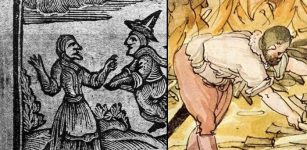 Five Witchcraft Myths Debunked By An Expert
Featured Stories | Oct 27, 2023
Five Witchcraft Myths Debunked By An Expert
Featured Stories | Oct 27, 2023 -
 7,000-Year-Old Unique Artifacts Discovered Under Melting Ice In Canada
Archaeology | Nov 30, 2023
7,000-Year-Old Unique Artifacts Discovered Under Melting Ice In Canada
Archaeology | Nov 30, 2023 -
 Ancient Ruins Of Hovenweep: Impressive Puebloan Masonry
Civilizations | Mar 15, 2016
Ancient Ruins Of Hovenweep: Impressive Puebloan Masonry
Civilizations | Mar 15, 2016 -
 Acheulian Culture Of Ethiopian Highlands And Their Prehistoric Tool Selection To Make Society’s Life Easier
Archaeology | Jan 10, 2025
Acheulian Culture Of Ethiopian Highlands And Their Prehistoric Tool Selection To Make Society’s Life Easier
Archaeology | Jan 10, 2025 -
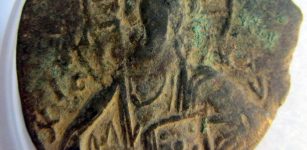 A 1,000-Year-Old Bronze Coin Accidentally Discovered By A Little Boy
Archaeology | Mar 12, 2020
A 1,000-Year-Old Bronze Coin Accidentally Discovered By A Little Boy
Archaeology | Mar 12, 2020

